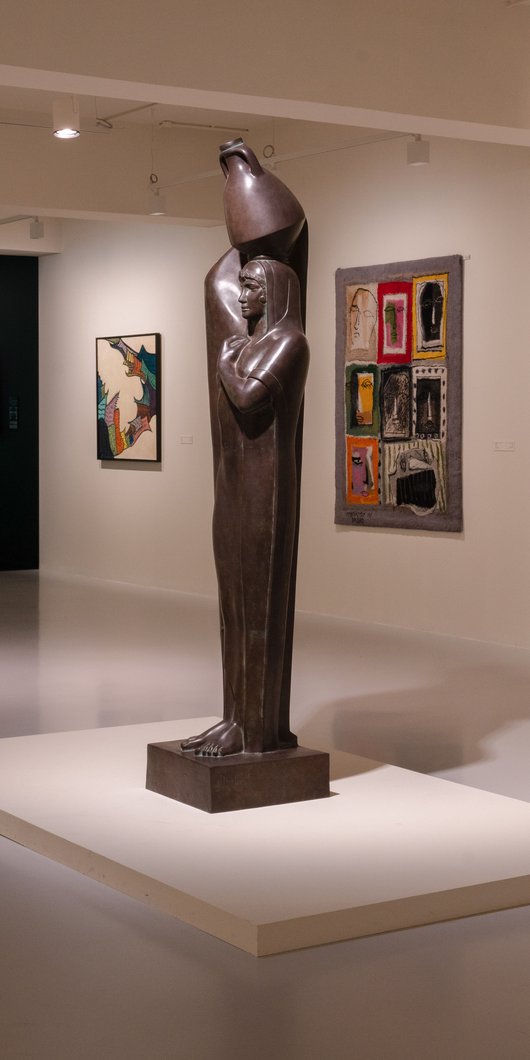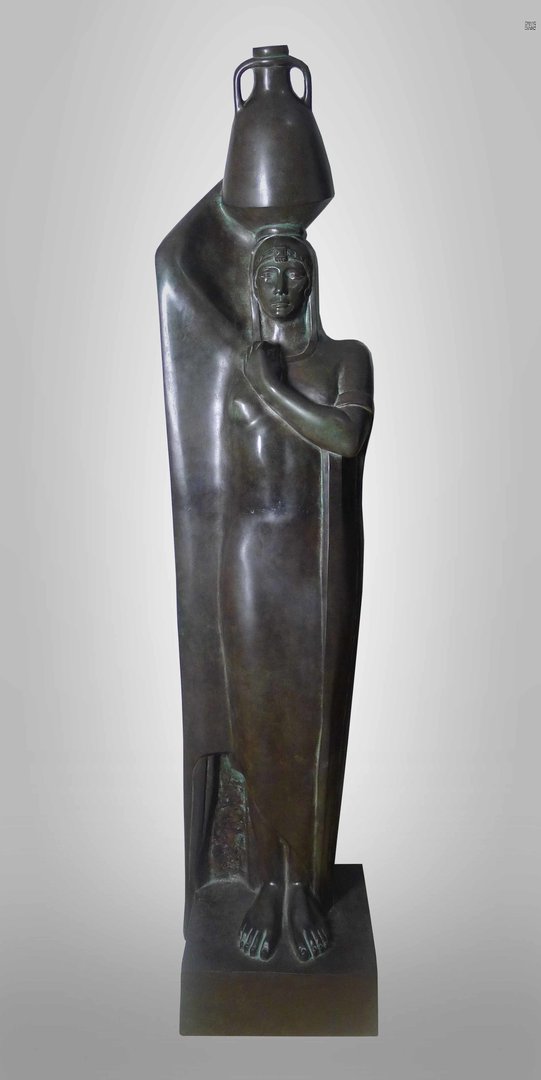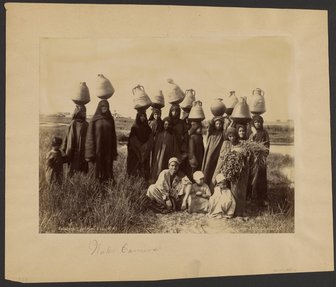Often regarded as Egypt’s first sculptor in ‘more than 1,700 years’(1), Mahmoud Mokhtar aimed to form an artistic language, with visual references that would reconcile a contemporary Egyptian public with its cultural and historical identity. In his practice, the sculptor detached himself from the European academic training that he had received to move his sculpting oeuvre towards a more nationalist art.
Throughout his career, Mokhtar took much of his inspiration from scenes of daily life in the Egyptian countryside as he searched for ‘Egyptian-ness’ in his work. He returned often to the figure of the fallaha (peasant woman; masculine: fellah), for example, producing a large number of various-sized sculptures of the subject, including this bronze statue entitled Au Bord du Nil (1930), on view as part of the permanent collection at Mathaf. The life-size artwork depicts a fallaha wearing a tarha (traditional Egyptian veil) and holding a balas (jug used to carry water) on her head.


